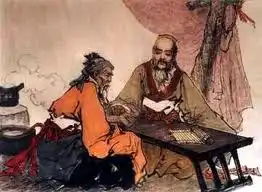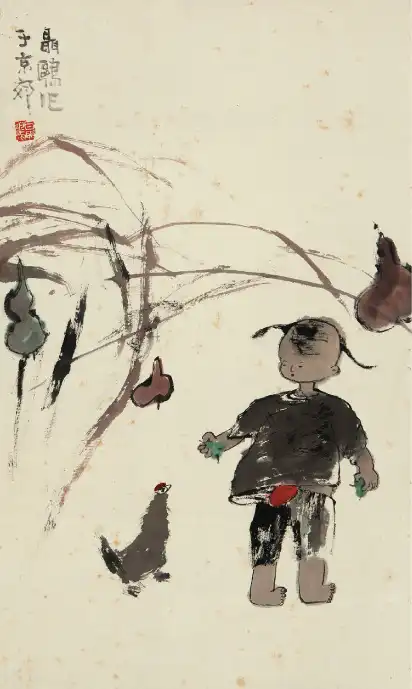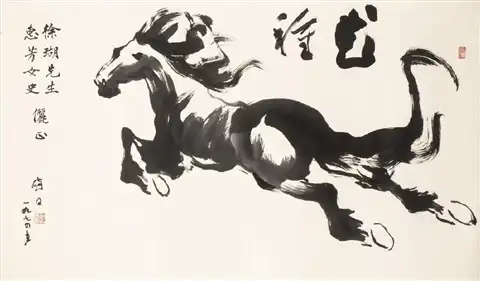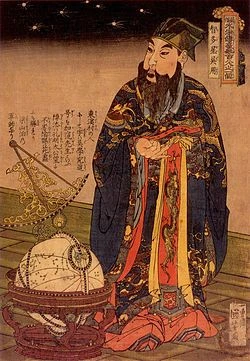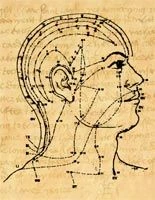Introduction to the disharmony
Major symptoms:
- sharp localized pain
- hard palpable masses in the abdomen
- painful menstruation with dark and clotted blood
- purple nails, lips, and complexion
- cold hands and feet
There are several causes that lead to blood stagnation. One is trauma. When we get hurt, especially if it is severe, the blood clogs up and stagnates causing sharp pain and purple discoloration – the color of stagnated blood.
Another reason is stagnated Qi.
Note: To understand the term "Qi", thus to get a better grasp about the following disharmony, we encourage our readers to review the short material What is Qi and The Concept of Qi in Traditional Chinese Medicine in the Vitality chapter.
In traditional Chinese medicine Qi and blood are interrelated and interdependent. It is said "Qi is the father of blood and blood is the mother of Qi”. If the Qi is stagnated the blood will stagnate as well. Thus prolonged and untreated Qi stagnation (caused by stress, anger, resentment, frustration and/or poor diet and lifestyle) will eventually lead to stagnation of blood. While the main symptom of stagnated Qi is distention, the main symptom of stagnated blood is pain that is sharp and localized. Another symptom of blood stasis are hard and palpable masses in the abdomen. In women there is painful menstruation with dark and clotted blood. Purple nails, lips, and complexion additionally confirm that the blood lacks movement.
Because of the above mentioned relationship between Qi and blood a long term stagnation of Qi will lead to chronically cold hands and feet as the blood circulation will not be flowing smoothly.
Major Chinese herbs
One of the most famous herbs in traditional Chinese medicine that moves blood is Chuan Xiong (Ligusticum chuanxiong). As blood stagnation majorly effects women this is a major herb used in TCM gynecology. It benefits painful or lack of menstruation, and difficult labor due to blood stagnation. It is also a major headache herb commonly used in combination with other herbs to treat headaches caused by different pathologies.
Yi Mu Cao (Leonurus heterophyllus) translates to “benefit mother herb” or “good for mother” and is commonly used for premenstrual abdominal pain, abdominal masses, infertility and irregular menstruation. (1)
There is a story about a woman who had a ten year old son. She suffered from abdominal pain due to blood stagnation ever since the birth of her child. Her son desperate to help cure his mother went to see an herbalist who gave him an herb that helped his mother feel better. When the child came back for more the herbalist requested five hundred pounds of rice to continue the treatment. Knowing that he cannot pay him with so much rice the child secretly followed the herbalist in the mountains and saw where he dug up the healing herb. The child took some plants with him and brought them home. The child’s mother was cured and ever since the herb has been called “good-for-mother” (2)
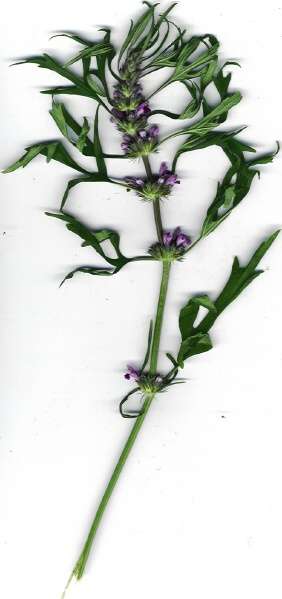
Other herbs, used in TCM gynecology for blood stasis patterns are Dan Shen (Salvia miltiorrhiza) – for painful or lack of menstruation, pain and palpable masses. Dan Shen is also a major herb for irritability; Yan Hu Suo (Corydalis yanhusuo), - powerfully benefits painful menstruation, also used for the relief of traumatic injury; Ze Lan (Lycopus lucidus) - bugleweed - is used for post partum abdominal pain. Yue Ji Hua ( Rosa Chinesis) - flower of Chinese tea rose, translated “moon season flower”, benefits scanty menstruation or no menstruation due to blood stasis. Hong Hua (Carthamus tinctorius L.) – safflower – benefits menstrual pain and abdominal masses, as well as blood stasis wounds, sores and carbuncles. San Leng (Sparganium stoloniferum) translated as “three edges” is an herb that vigorously breaks up blood stagnation and benefits any of the above listed symptoms.
If Chuan Xiong is an herb that moves the Qi upward and benefits headaches, Niu Xi (Achyranthes bidentata) is an invigorating the blood herb that moves blood downward and counteracts nosebleed, bleeding gums, and vomiting of blood. It’s downward moving energy makes it a major herb for knee and lower back pain, as well as UTI and kidney stones. Ji Xue Teng (Spatholobus suberectus) is another herb that benefits lower back pain and knee pain, and general soreness in the joints; it also tonifies blood and benefits scanty menstruation. Jiang Huang (Curcuma longa) – turmeric rhizome, also translated “yellow ginger”, relieves obstruction with blood stasis, especially in the shoulders. Yu Jin – turmeric tuber, translated as “constrained gold” together with invigorating the blood also clears phlegm from the Heart, manifesting in symptoms such as anxiety, agitation, mental derangement. It is also used for Gallbladder disorders and benefits jaundice.
Turmeric is one of the main ingredients in curry powder. It is added to a mix of spices which usually consist of coriander, cumin seeds, fenugreek seeds, chili, mustard seeds, black peppercorns and salt. In some places in Asia (for example in Okinawa) turmeric is added to hot water and then strained (with touch of ginger and lemon juice) to make tea. It can also be added to milk and simmered.
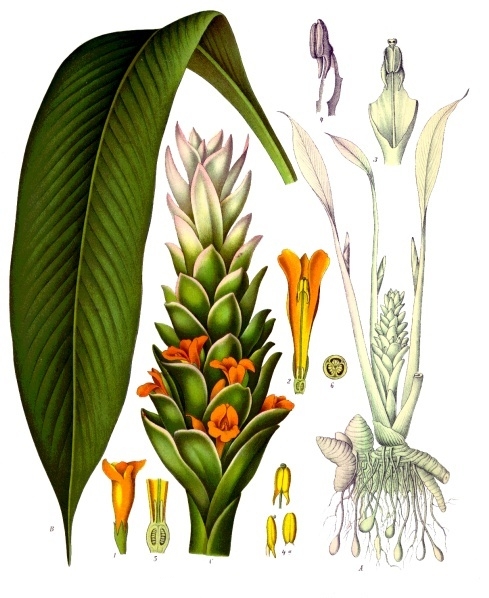
Tao Ren (Prunus persica) - peach kernel – is a central herb that addresses all types of blood stasis problems, including injury and Lung and Intestinal abscesses, believed in Chinese medicine to be caused by stagnated Qi and blood. Being a seed it also moistens the intestines and benefits constipation. Ru Xiang (Boswellia carterii) is translated “fragrant milk” and is a blood invigorating herb that generates flesh. It is used to benefit the healing process in sores, carbuncles and trauma. Chi Shao (Paeonia veitchii) – red peony – invigorates the blood and also cools the blood, thus stops bleeding. Wang Bu Liu Xing (Vaccaria segetalis) moving action can be found in its name - “king who does not stay but departs”. In the upper part of the body this herb promotes lactation and in the lower part of the body it unblocks menstruation.
There are also animal substances that invigorate the blood. Pangolin scales – Chuan Shan Jia (Manis pentadactyla L.) promotes lactation and also discharge of pus, thus benefits abscesses and boils. Leaches are widely used for their anti-coagulating effect, clot dissolving and anti-inflammatory effects in the West. In Chinese medicine Shui Zhi (Hirudo nipponia) – leeches - are used to reduce immobile masses. Ark shell – Wa Ling Zi (Arca inflata) – is also used for immobile masses, as well as mobile masses in the abdomen; it additionally absorbs acid and benefits acid regurgitation. Wingless cockroach – Tu Bie Chong (Eupolyphaga sinesis) – renews sinews and bones and is used for cuts and fractures. Toasted and crushed into powder it is used for lumbar pain. The feces of flying squirrel – Wu Ling Zhi (Trogopterus xanthipes) – move blood and are used for childhood nutritional impairment.
Healing foods

To unlock the rest of this article select "Yes, I want to learn!" below.
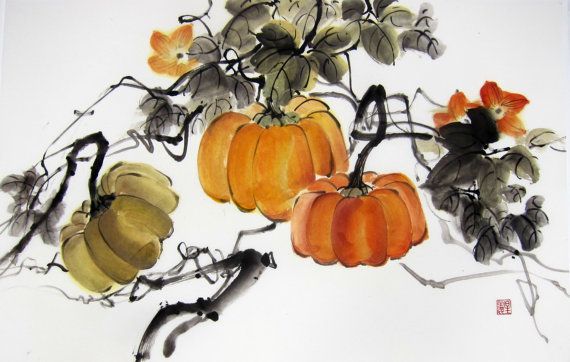
Food therapy is the most economical and non-toxic biochemical approach to health and disease. Food is something we continuously use to sustain our lives. Learning what foods are healing (and what disruptive) for each condition has the potential to convert every meal into a form of therapy.
YS
(1) Benski, Dan & Gamble, Andrew (1993). Materia Medica, Revised Edition. Seatle: Eastland Press, Incorporated
(2) Lu, Henry (2005). Chinese Natural Cures. New York: Black Dog & Leventhal Publishers, Inc.
(3) Pitchford, Paul (2002). Healing with Whole Foods. Berkeley: North Atlantic Books
(4) Holmes, Peter (1998). The Energetics of Western Herbs. Boulder: Snow Lotus Press, Inc.
Related Articles:
Note: This site and its services are to consumer educational use only. Nothing contained in this site is or should be considered, or used as a substitute for medical advice, diagnosis or treatment. We advise users to always seek the advice of a physician or other qualified professional with any questions regarding personal health and medical condition. Please read our Disclaimer

